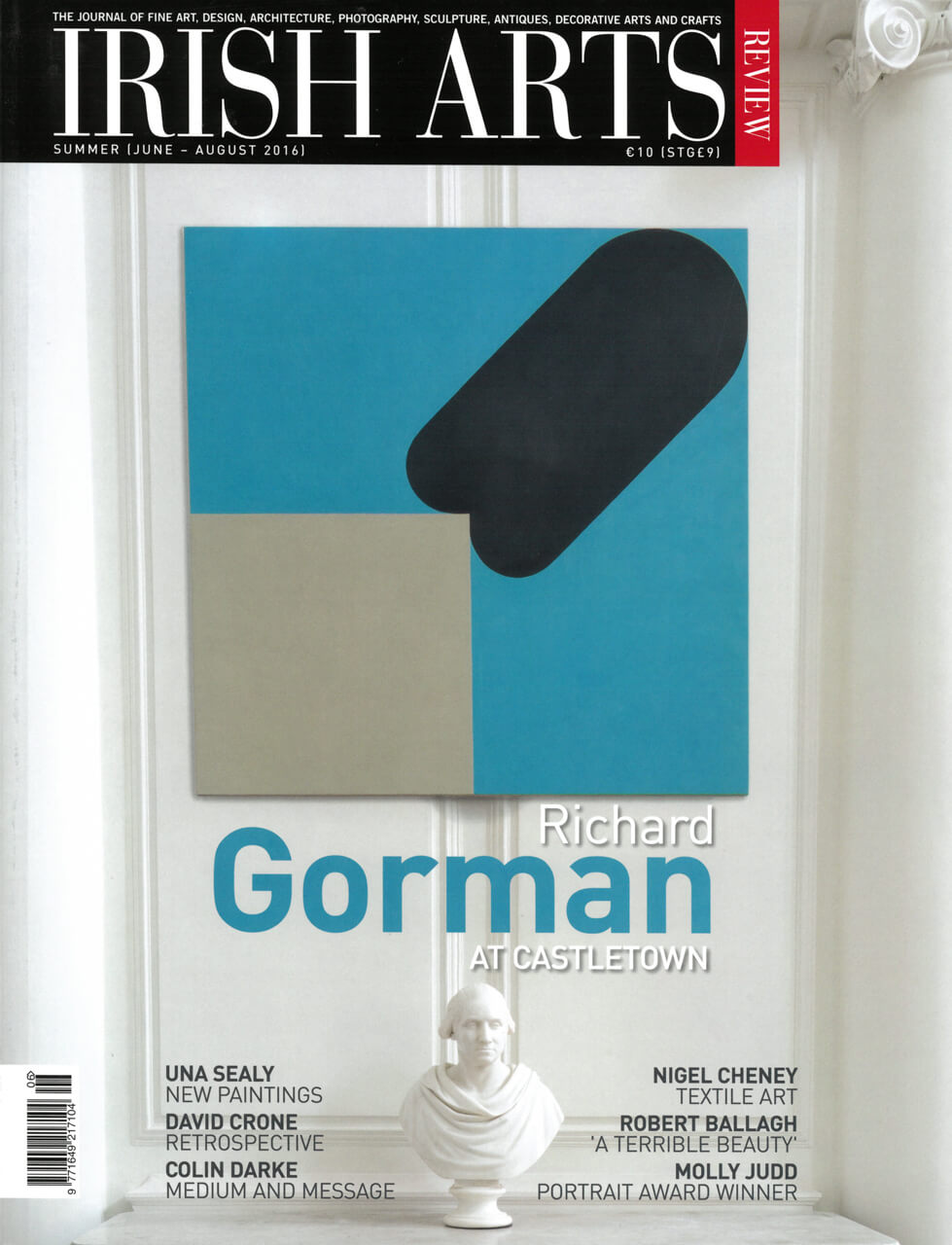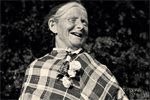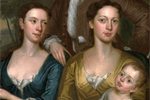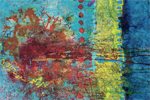
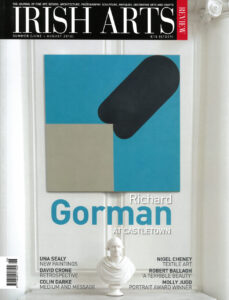
Gerry Walker welcomes an alternative to the conventions of gallery management in the work of Olivier Cornet
At first sight the area bounded by Mountjoy and Parnell square on Dublin’s North side looks fairly run down and evokes a sense of faded, if not decayed, Georgian elegance. It seems an unlikely location for an emerging commercial art gallery. Closer scrutiny reveals however, a locality rich in cultural activity which numbers among its assets, Dublin City Gallery The Hugh Lane, the Dublin Writer’s Museum, the Gate Theatre, the James Joyce Centre, the O’Reilly Theatre, and Fishamble Theatre Company. Joining this constellation at No. 3 Great Denmark Street is the Olivier Cornet Gallery.
Olivier Cornet is a French national with considerable experience in art curatorship and project management both in Ireland and abroad. As a gallerist he began in Temple Bar in 2012 having managed cultural events in many contexts and locations prior to that. Arts event management, while rewarding in itself, did not afford him the opportunity to consolidate and develop projects with the people and ideas garnered along the way. When he was offered the space by Belvedere College, the owners of No. 3, he grasped the opportunity to participate in and develop a programme for local cultural rejuvenation.
Until relatively recent times, Dublin’s commercial galleries have been on the whole traditional conservative institutions. Over the past forty years their evolution has been gradual: their trajectory can be traced from being virtually inaccessible to the general public to being accessible virtually to all, courtesy of new media. Their individual character was in part a reflection of their proprietor’s personality. Three iconic figures of the times serve as illustration. In the late 1960s and 1970s the David Hendriks Gallery, located on St Stephen’s Green epitomized Modernist chic. Hendriks was urbane, witty, sartorially sublime and conservative. He appeared remote and aloof, which was not actually the case, but this tone mediated the gallery experience and did little to put the occasional or hesitant viewer at ease. Leo Smith was the front-of-house man at the Dawson Gallery which was based in the similarly high-tone area of Dawson Street. Smith was occasionally gruff in demeanor. He emitted an aura of constant busyness that contributed to an image of tetchiness and remoteness. Smith was an innovative gallerist on many levels, as indeed was Hendriks, but the experience of visiting his gallery was not always a comfortable one. Across the river, on a frontier outpost on the North side, the Davis Gallery shone like a beacon on Capel Street. The proprietor Gerald Davis, whom Olivier Cornet knew and worked with, held court on a street populated with carpet and furniture stores, public-houses and purveyors of hardware. Davis was a discerning dealer. Genial and outgoing, he had, unlike the other patricians, a demotic touch which both artists and audiences found agreeable. He was discerning in his selection of artists and they in turn were loyal to him. Cornet acknowledges him as a friend and a mentor in the early stages of his career.
The 1980s and 1990s witnessed the arrival in Dublin of the niche white cube gallery that promoted conceptual/minimalist activities. Almost generic in both their ethos and appearance some have evolved and survive to this day having established an artist-client base that is almost tribal in its allegiance to what is perceived as essential, worthwhile, and ultra contemporary art practice. Some sank without trace in that period when Conceptualism determined that process rather than product was all the rage – it was difficult to commodify process – and they were never to be seen again.
This is the legacy of iconic gallerists and niche outlets that populates the landscape of Dublin’s commercial gallery environment, and the context in which Cornet’s venture may be viewed. From its inception the aim of his gallery, the embodiment of his personal cultural ethos, has been to work with and represent Irish-based artists whilst reflecting and promoting the rich diversity of practices within the country. He believes in the cross- pollination of ideas across disciplines and has established a policy of collaboration with other cultural practitioners; writers, poets and playwrights. The aspiration is to actively engage with the community to create a new public for the arts by bringing artists together with their audiences in an informal setting.
In addition to mounting exhibitions, Cornet hosts open, public-chaired discussions with his gallery artists about pending exhibitions in advance of openings. He also facilitates gallery-based presentations with interactive discussions between artists, writers, actors and curators as well as personally participating in external curated events. He is at pains to stress the inestimable creative value of interactive exchanges and believes emphatically that outcomes are what matter.
While the artists currently associated with the gallery come from diverse backgrounds, with their own stylistic preferences, they share Cornet’s fascination for cultural fusion. The rationale underpinning their association is Cornet’s belief in the eclectic mix. The current group exhibition is entitled ‘Effleurements’. This French word refers to the delicacy required to remove a flower from its stem. Here it is being applied to the lightness of touch deployed in a brush stroke or a mark made on a surface for expressive effect. The thematic concept was devised by Cornet, adopting a curatorial role, and his artists responded to what was effectively a brief. Their work provides a useful introduction to the quality of the in-house artists among whom are included:
Kelly Ratchford (Fig 5) imbues her work with a strong graphic quality. She creates images of anxiety which are rendered in a manner reminiscent of children’s drawings. This style of traumatic depiction may have been informed by her studies in psychology. She articulates a’ less is more’ direct and humane aesthetic with her graphic spareness.
Yanny Petters (Fig 3) is widely renowned for her botanical drawings. She explores the minutiae of nature. She has developed particular skills by using a technique for painting on glass known as Verre Eglomise which was developed in the 1920s and practiced by artists like Franz Marc and Paul Klee. Her analytical abilities are supported by sublime delicacy and precision.
Jordi Fornies (Fig 1) started out as a scientist, [chemistry] and this partly explains his desire to explore the complexities of materials and their levels of interactivity and aspects of musicality. His work reflects quite clearly ideas of convergence in nature and art.
Claire Halpin (Fig 6) has an interest in the way contemporary images are perceived and interpreted. She uses digitalized mass-media images from newspapers, magazines, TV and re-presents them in recontextualized formats.
Eoin McLochlainn (Fig 2) invariably uses newspaper imagery as source material for studies of ordinary people in situations of crisis or conflict, be they homeless or drug dependant. His figures tell a human story of grace under pressure. Here is depicted a diptych portrait of Olivier Cornet, himself graceful but not especially under pressure. McLochlainn has done what a good portrait artist should do in that he has maximized his technique to express character and context.
Conrad Frankel (Fig 4) A degree in biblical studies has proved to be of no hindrance to Frankel whose work subtly exudes an intensity of feeling. The image of the goldfish bowl has many connotations that may highlight and accentuate both existence and character. The larger the subject and the content the more understated the technique and imagery.
The historical spectrum of gallery functions ranges from the least worthwhile, passive purveyance of cultural artefacts, to more innovative engagements and promotions with artists and consumers. In Ireland long-established commercial galleries tended towards the former with variations on this theme. Better constituted galleries also acted as artist-agents in addition to providing mere showroom space. More advanced manifestations offered all of the above with guaranteed access to designated buyer listings. This makes very good commercial sense.
To be successful it is essential to know your market in order to develop it and bring the essential entities together with beneficial outcomes for all concerned. Cornet takes this activity to a different level. He has an unshakeable desire to increase interest in the visual arts and facilitate connections with a broad range of arts practices. He starts from the premise that his gallery is part of a local cultural hub which he is actively promoting. Within that space he encourages artistic interaction with a variety of art forms with the intent of fostering creativity. He has also created a very successful online presence and a dynamic social media profile which hugely extends the range and definition of his gallery’s reach.
In this regard he sees himself as principally a curator of exhibitions and related cultural events. This curatorial function is a reflection of his experience in France where the system allows for a gallerist to ‘defend’ his stable of artists. Cultural advocacy is not a function generally associated with the commercial gallery system in Ireland. Although the phenomenon is gaining purchase among artists who appreciate being promoted and defended in a broad context and also among audiences who often feel excluded or marginalized and consequently disinclined to engage with galleries as a whole. Community engagement and cultural advocacy are the terms that describe the currency of the progressive commercial gallery. Olivier Cornet is an integral part of this new wave.
All images © The artists.
Gerry Walker is a former lecturer at the NCAD and a regular contributor to the Irish Arts Review.
